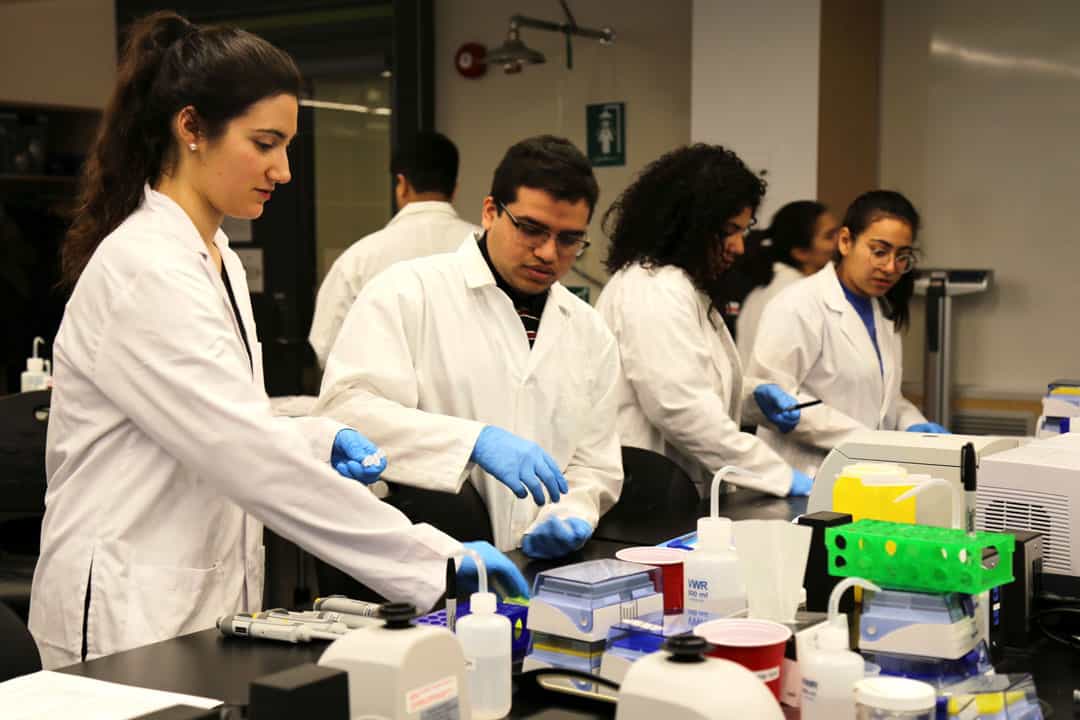“I asked the students to stay behind an hour to complete the CRISPR lab, and every student was happy to do so. In fact, they were excited and enthusiastic to do so,” said Associate Professor Alistair Dias on the CRISPR lab that he developed for HMB311, his third-year laboratory course.
By now, you have probably heard of the genome-editing technology CRISPR: clustered regularly interspaced short palindromic repeats. Some bacteria and archaea are capable of incorporating short segments of viral DNA into their own DNA as a form of memory or immunity in case the virus attacks again. Essentially, these segments are transcribed to create guideRNA — RNA that is complementary to the original viral DNA. The guide RNA forms a complex with Cas9, a DNA endonuclease that cleaves DNA at sites matching the guideRNA. Should the virus attack again, Cas9 would break down the invading viral DNA, neutralizing the threat.
Similar to the cut and paste tool on your computer, scientists have been using Cas9’s ability to cut specific DNA sequences to alter, knock out, or introduce new genes. Dias wanted to expose his students to this cutting-edge technology. “I mainly developed this lab for my students to keep them up to date on the research techniques being used in the scientific field and provide them with an enriched learning experience,” said Dias.
The lab involves modifying a sequence of DNA to change cells from blue fluorescence to green fluorescence over the duration of four weeks. The guideRNAs that target the fluorescence gene will be made by the students. “Making their own guideRNA will help students better understand how CRISPR works, and maybe one day, when they are asked to develop a guide in their research lab, they’ll have sufficient experience,” said Dias.
If students are successful throughout the lab period, Cas9 will cleave a critical portion of the DNA for blue fluorescence, and the break should be filled with a sequence encoding green fluorescence instead. The final and colourful results will then be visualized by students using fluorescence microscopes.
Dias is excited that the students will be able to add this lab experience to their CVs.
Along with visualizing the colour changes from blue to green as a result of the CRISPR edit, students will also be using an automated hemocytometer to count the number of cells that were successfully introduced with new genetic material. They will then use this information to compare the efficiency of infecting cells with either a Cas9 protein directly or with Cas9 mRNAs — both methods are commonly used in a professional research setting.
“My class is one of the first, if not the first, undergraduate classes at U of T to be using CRISPR, so I am very excited to see the students learn about this technique that is so relevant to today’s research and genetic engineering. It may cost a little more than the basic microarray that used to be taught, but it is a thousand times more worth it,” said Dias.
Dias and his colleagues also hope to implement CRISPR into their fourth-year Human Biology laboratory courses in the near future.


